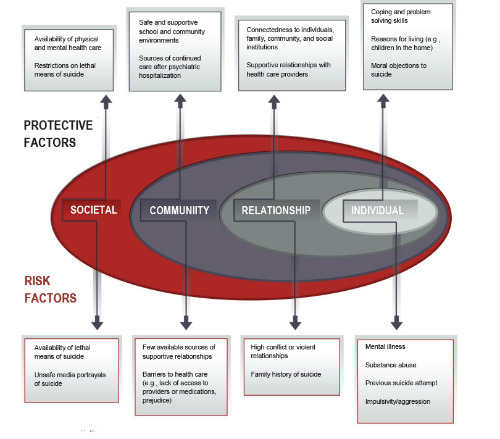- Higher suicide rates ranged from >90/100,00 to >50/100,000 vs.13 to 16/100,000 among the general population.
- People who work as farmers, fishers, foresters, and in the construction and extraction industries are at greatest risk of suicide.
- Among women, the highest rate was seen in those working in protective services, such as policing and firefighting.
- Early physician intervention would be of greatest benefit with these patient groups.
The results of recent research on suicide indicate that people in a number of professions are at significantly increased risk. The researchers found that nearly 30% of all suicides occurred among the four occupational groups: construction and extraction, management, production, and installation, maintenance, and repair. The highest proportion of suicides occurred among persons aged 45–54 years, and the lowest rate was found among people aged 16–24 years. These data were published recently in Mortality and Morbidity Weekly Report by the Centers for Disease Control and Prevention (CDC). (Figure 1.)

(Sources: By Polmuadi/Flikr/Creative Commons.)
"People working in certain occupations are at greater risk for suicide due to job isolation, a stressful work environment, trouble at work and home, lower income and education, and less access to mental health services," lead researcher Wendy LiKamWa McIntosh, MPH, told Healthday.com. Ms. LiKamWa McIntosh is a health scientist at the CDC. Her collaborator was Alan Manevitz, MD, is a psychiatrist in private practice in New York City He is also a Clinical Associate Professor at the Payne Whitney-Weill Cornell Medical Center, and an Attending Psychiatrist at New York Presbyterian and Lenox Hill Hospitals. He teaches at the Weill-Cornell Medical School, in New York City.
The Analysis and Data
The study included 12,312 cases of suicide that were included in CDC’s 2012 data set. Of these, 9,509 (77.2%) were male, and 2,801 (22.8%) were female. (Information about sex was missing for 2 cases.) Ages of the decedents ranged from 16 to 102 years. The highest proportion (22.7%) of suicides occurred among persons aged 45 to 54 years. The lowest rate (11.6%) occurred among people aged 16 to 24 years. The vast majority (84.5%) were aged 16 to 64 years.
Approximately 30% of all suicides occurred among people in the following occupational groups:
- Construction and extraction (1,324; 10.8%)
- Management (1,049; 8.5%)
- Production (953; 7.7%)
- Installation, maintenance, and repair (780; 6.3%)
Among men, the highest suicide rates were found among people in the following occupational groups:
- Farming, fishing, and forestry (90.5/100,000).
- Construction and extraction (52.5/100,000).
- Installation, maintenance, and repair (47.5/100,000).
Among women, the highest suicide rates occurred among the following occupational groups
- Protective service occupations (e.g., law enforcement officers and firefighters; 14.1/100,000).
- Legal (13.9/100,000).
- Healthcare practitioners and technical (13.3/100,000).
Overall rates of suicide (men and women combined) were highest in the following occupational group:
- Farming, fishing, and forestry (84.5/100,000).
- Construction and extraction (53.3/100,000).
- Installation, maintenance, and repair (47.9/100,000).
“Rates of suicide varied by sex, with higher rates among males than females in all occupational groups,” the authors noted.

(Sources: Wikipedia/Creative Commons/CDC.)
“Earlier studies of suicide by occupation type in the United States have examined one occupational group at a time, such as police suicides, or have studied data from a specific U.S. state. This analysis includes recent data from 17 states and an analysis by sex. The proportions of suicides among males (77.2%) and females (22.8%) in this analysis were similar to those reported nationally in 2012 (78.3% and 21.7%, respectively),” the authors explained.
Occupational groups with higher suicide rates might be at risk for a number of reasons, including job-related isolation and demands, stressful work environments, and work-home imbalance, as well as socioeconomic inequities, including lower income, lower education level, and lack of access to health services, the authors explained. (http://www.ncbi.nlm.nih.gov/pubmed/23873359, http://www.ncbi.nlm.nih.gov/pubmed/25794471).
“Previous research suggests that farmers’ chronic exposure to pesticides might affect the neurologic system and contribute to depressive symptoms. Other factors that might contribute to suicide among farmers include social isolation, potential for financial losses, barriers to and unwillingness to seek mental health services (which might be limited in rural areas), and access to lethal means. Construction workers might be at higher risk because of financial and interpersonal concerns related to lack of steady employment, and fragmented community or isolation.
Prevention
The authors suggested a number of steps that physicians can take to reduce suicide rates among high-risk groups. For starters, they recommended providing suicide prevention activities directed toward persons aged ≥16 year. These can include enhancing connectedness to family and friends, encouraging help-seeking for patients who exhibit signs of distress or suicidality. They also recommended the support of efforts to reduce stigma associated with help-seeking and mental illness. 
(Sources: 2012 National Strategy for Suicide Prevention/
By United States Surgeon General/[Public domain], via Wikimedia Commons.)
“Some potential suicide prevention strategies include workplace approaches, such as employee assistance programs, which might serve as gateways to behavioral health treatment. Workplace wellness programs can provide education and training for staff members and supervisors to aid in recognition of suicide warning signs (eg, withdrawal, increased substance abuse, agitation, and putting affairs in order),” the authors explained.
“Employers also can use technology to provide online mental health screenings, web-based tools for mental health information, and mental health screening kiosks for their employees, as well as ensure that employees are aware of the National Suicide Prevention Lifeline at www.suicidepreventionlifeline.org and (800)-273-8255.”
